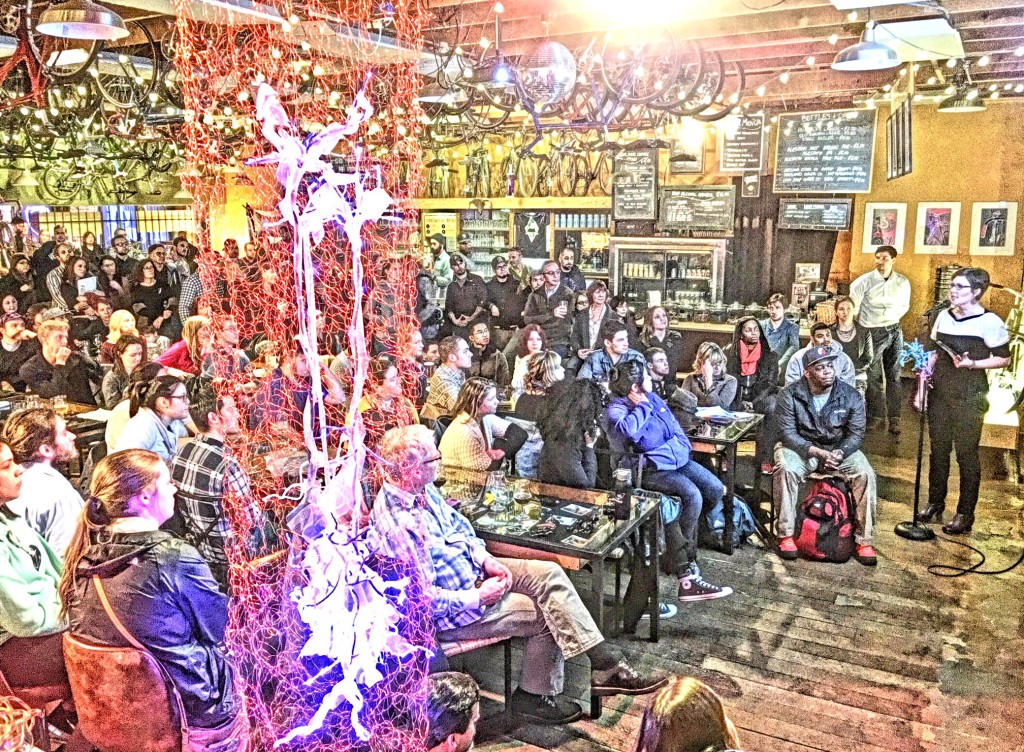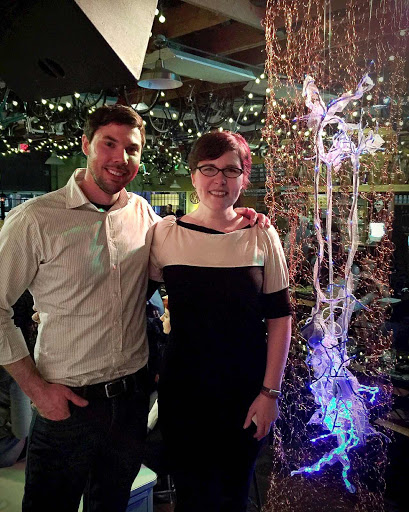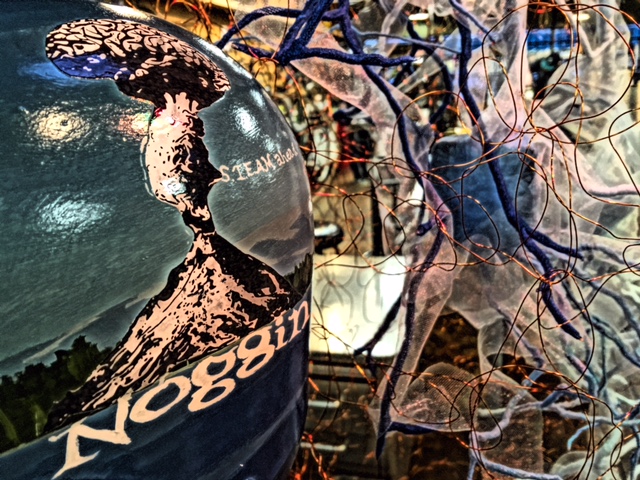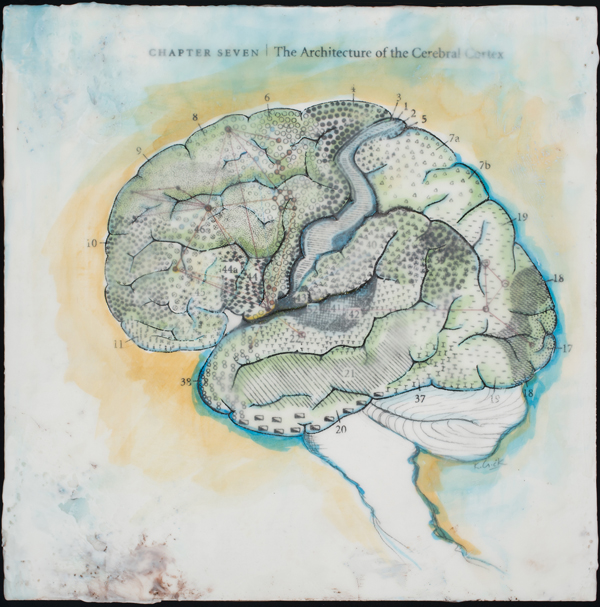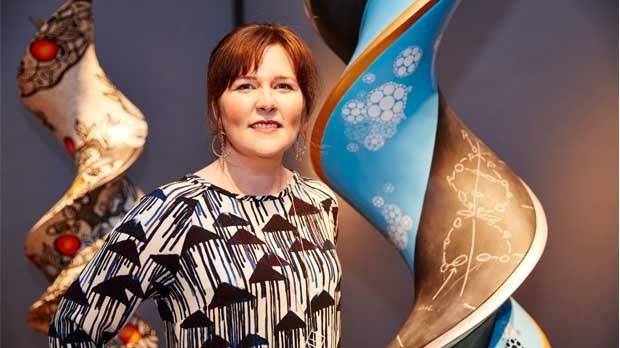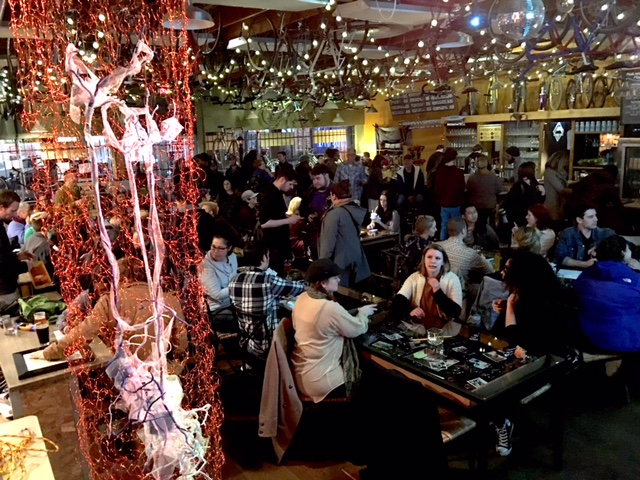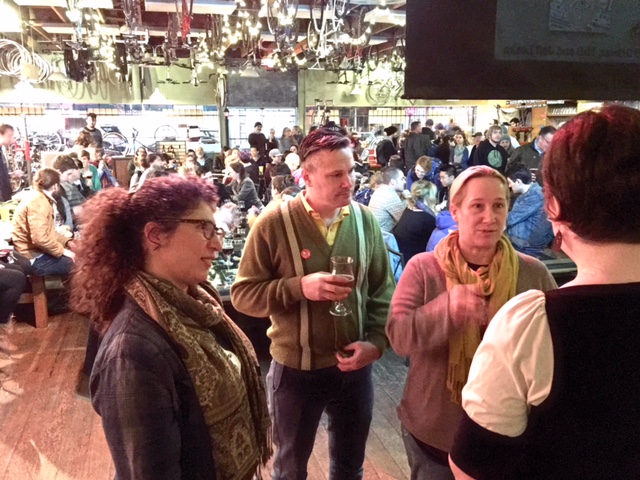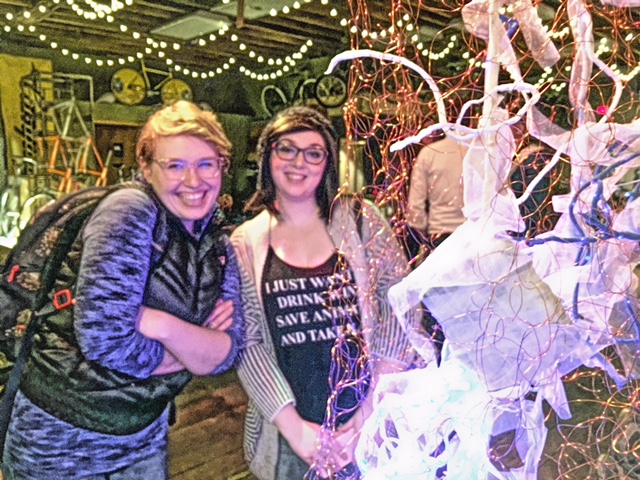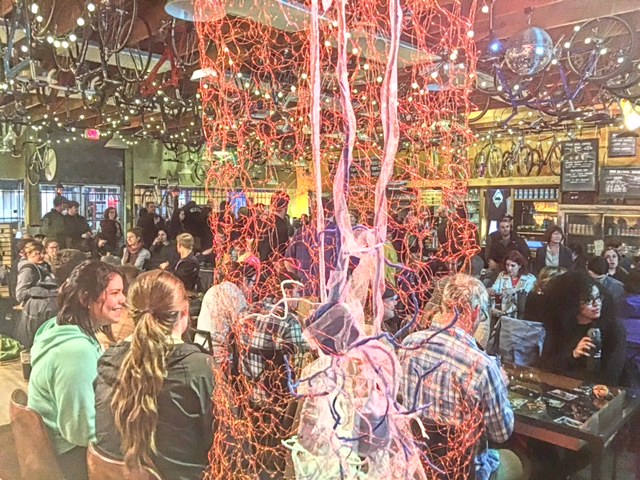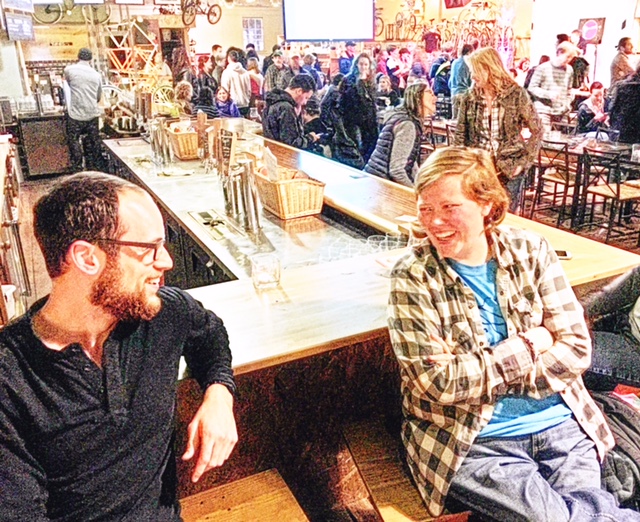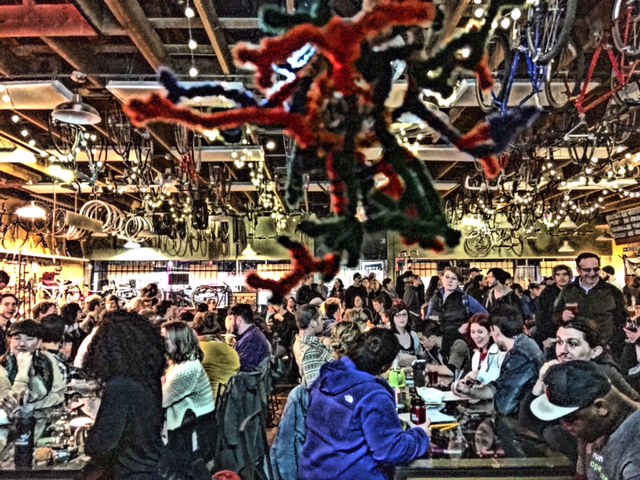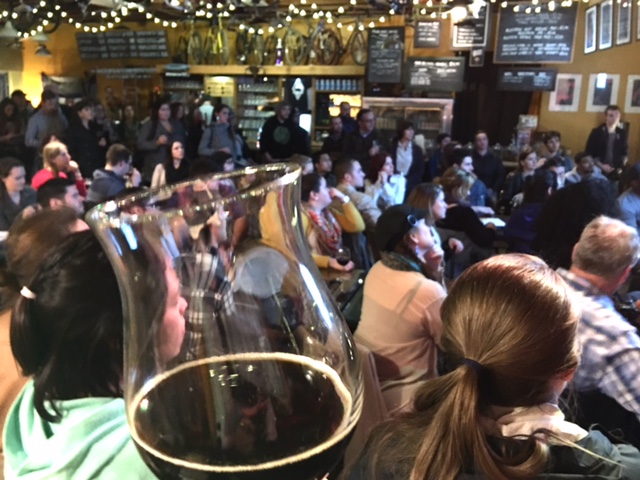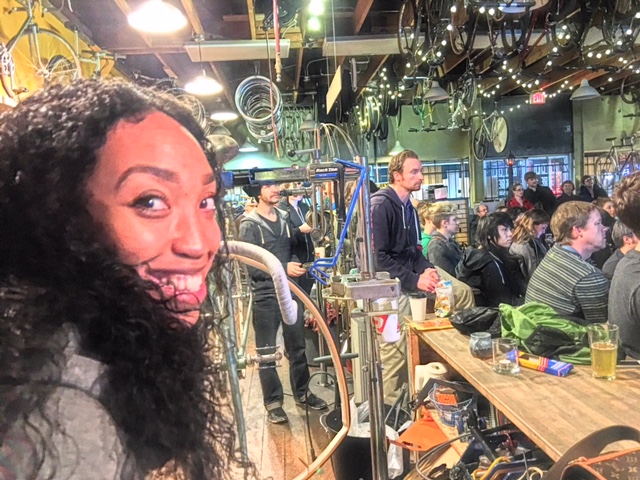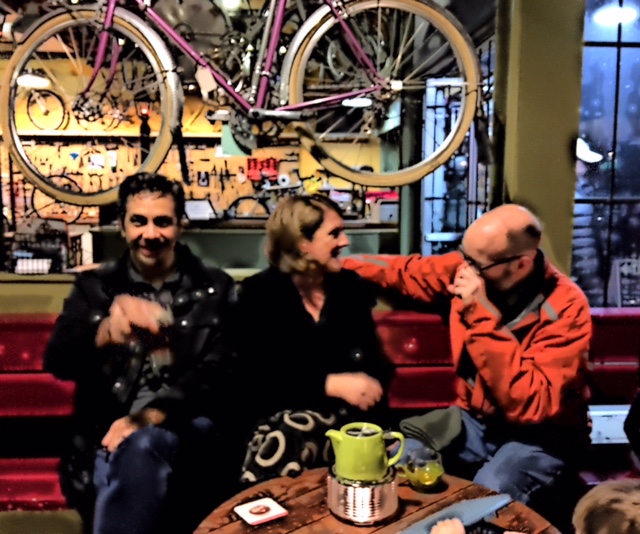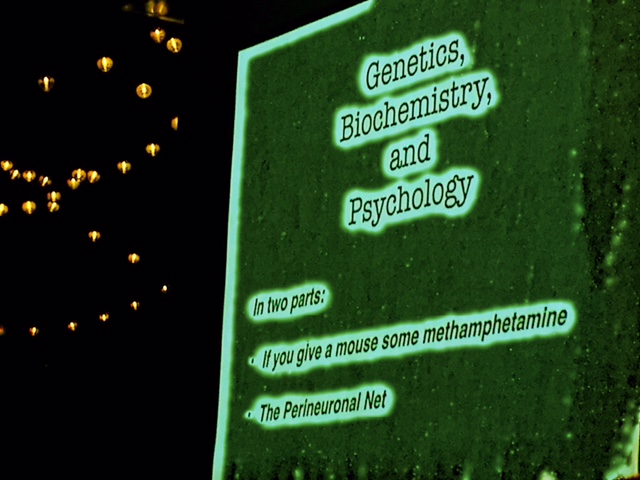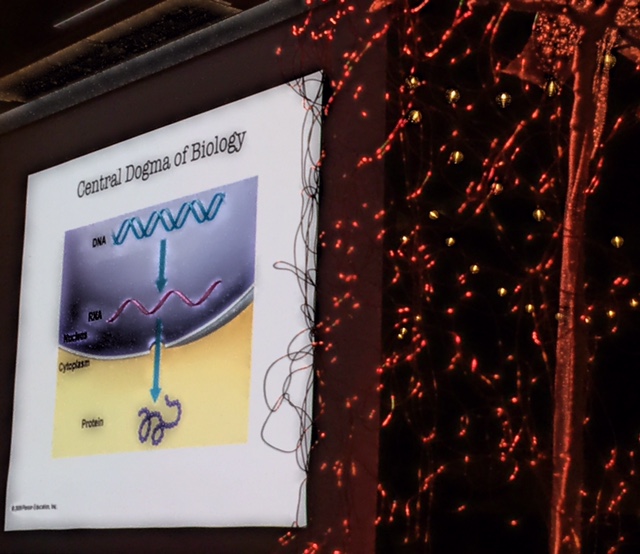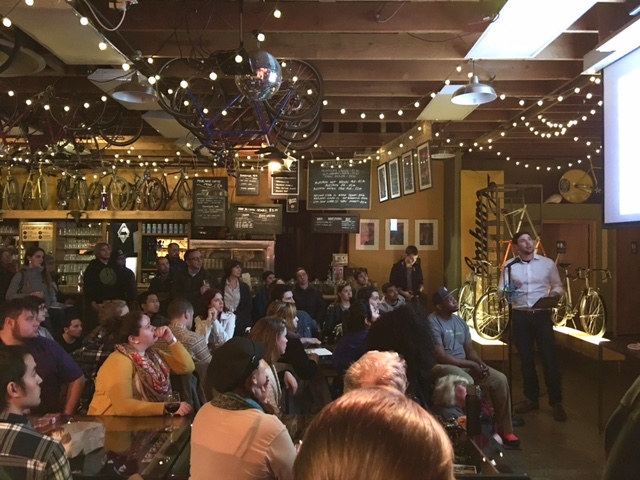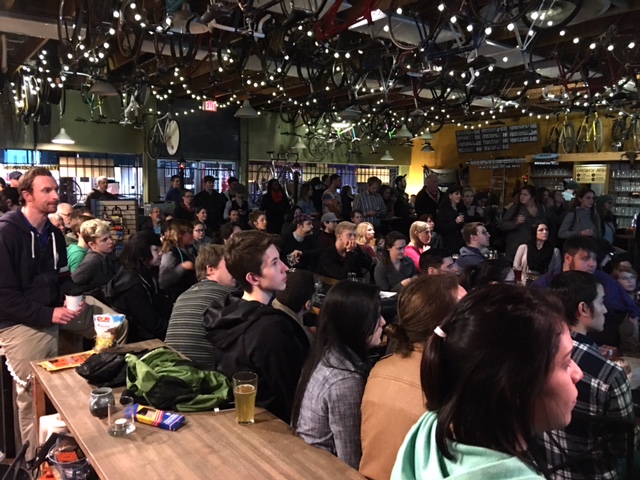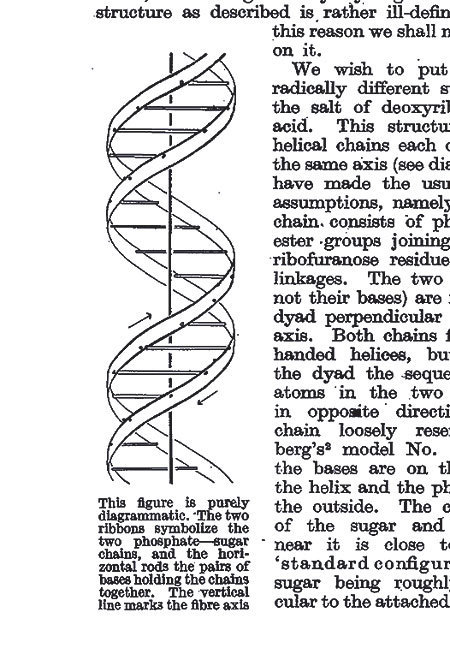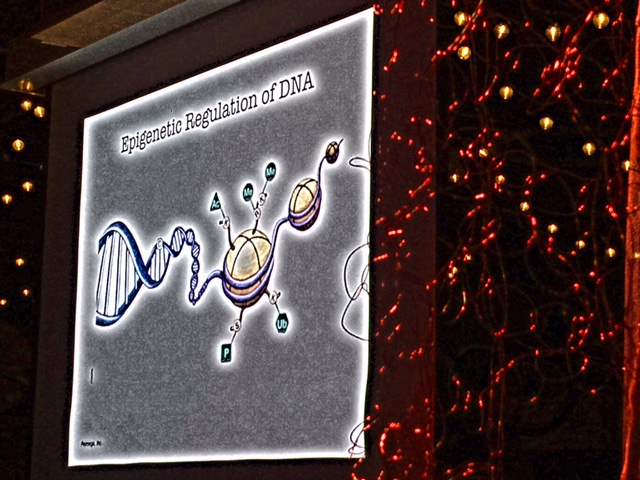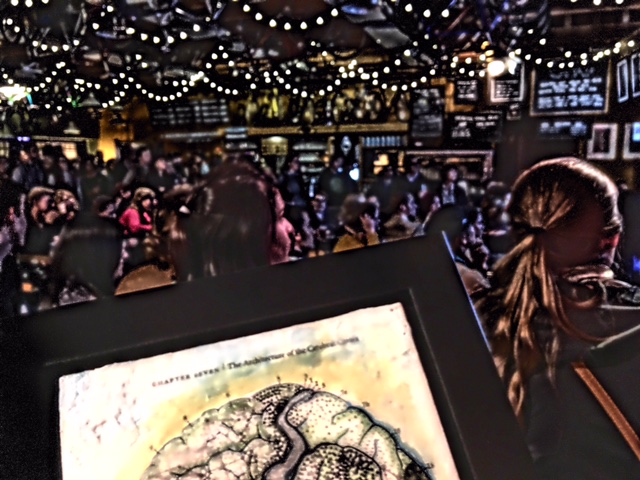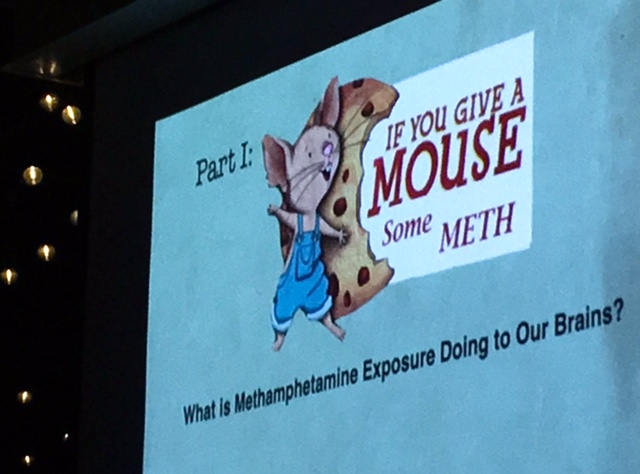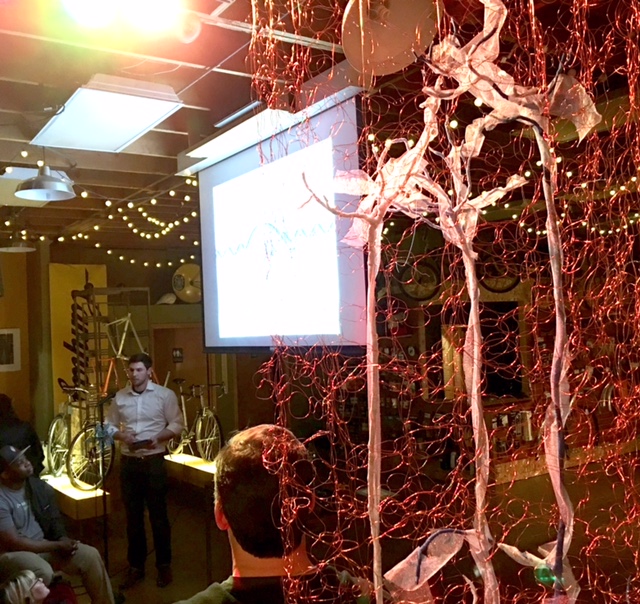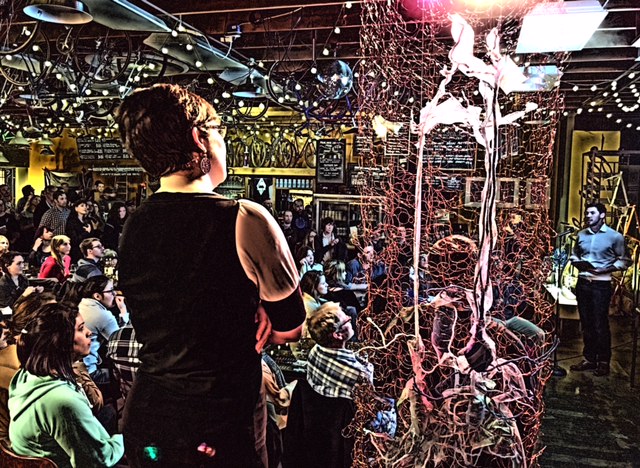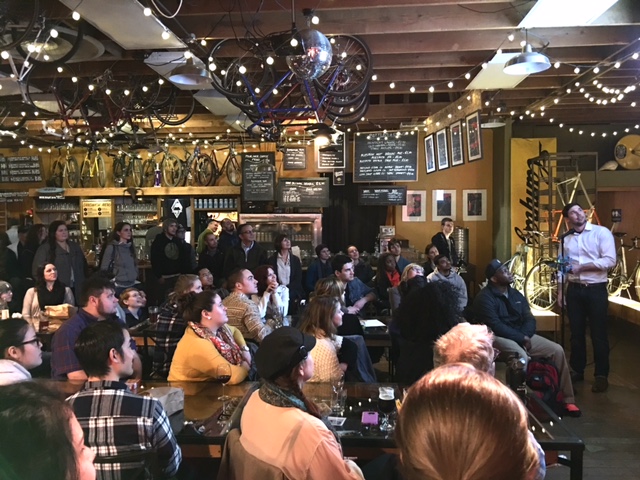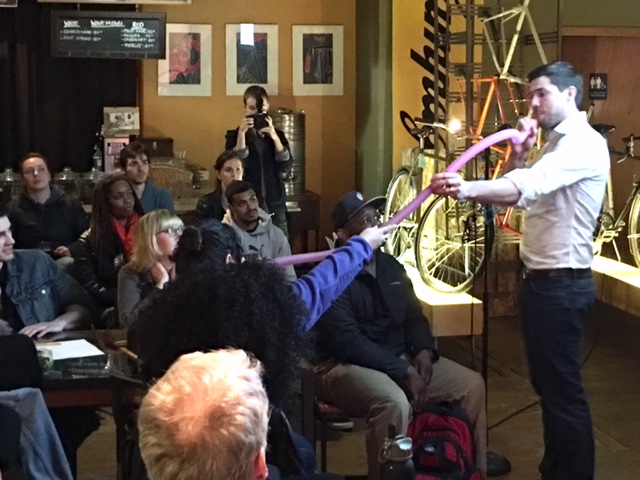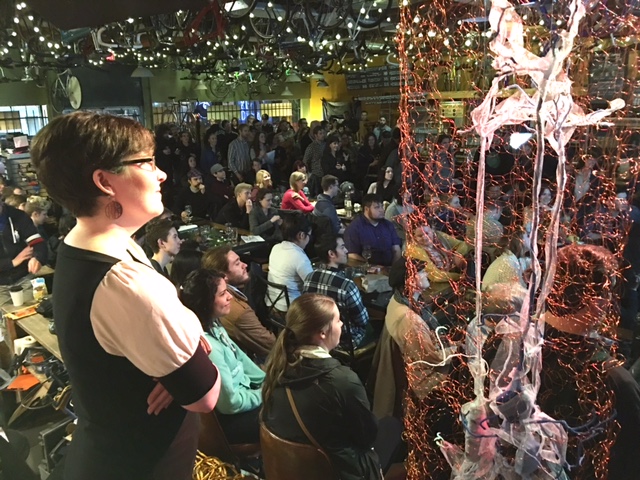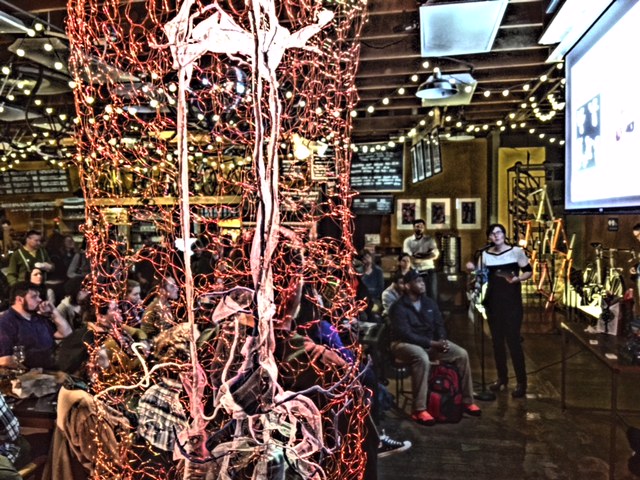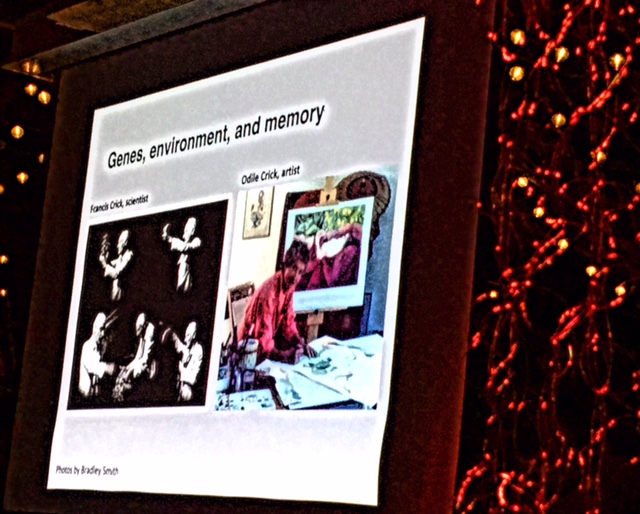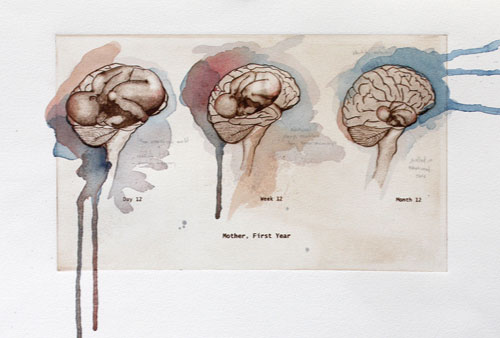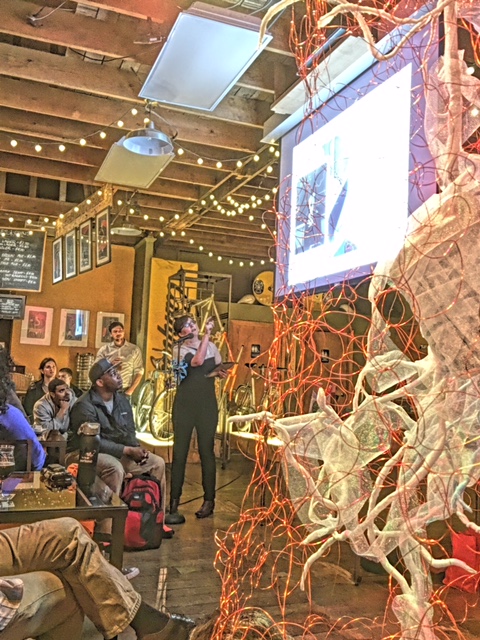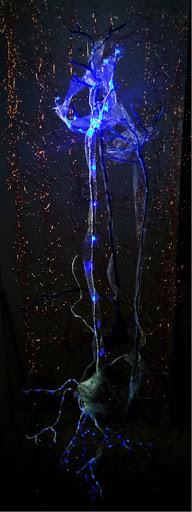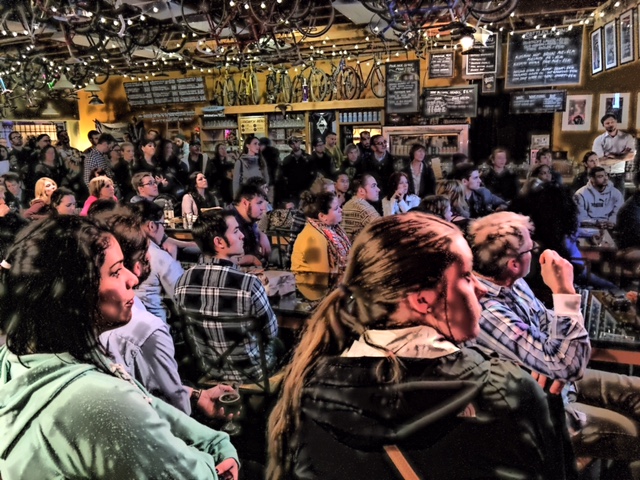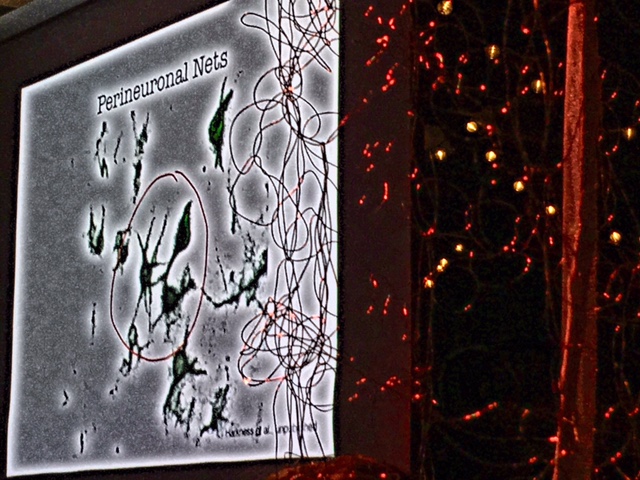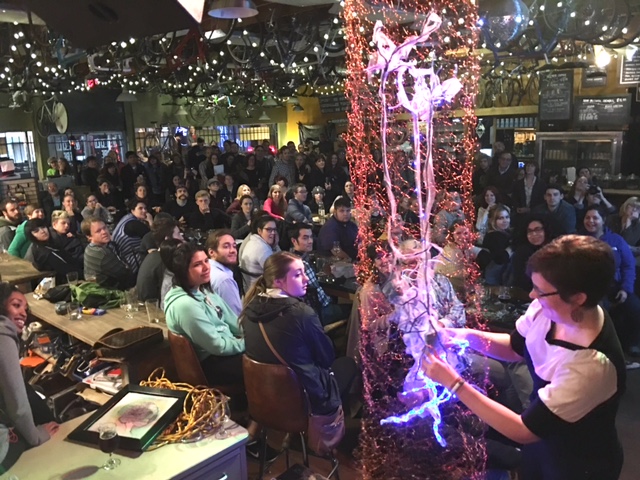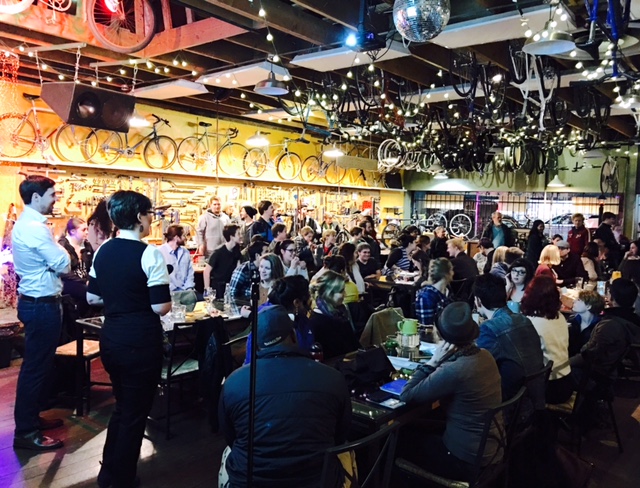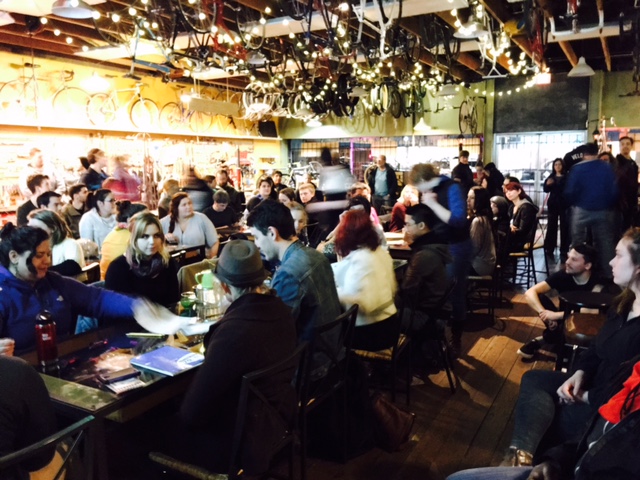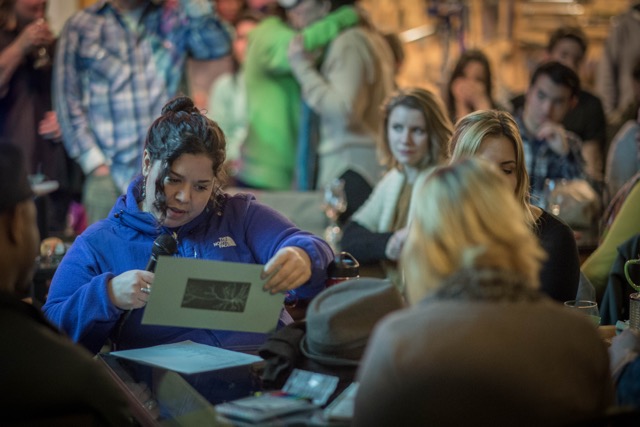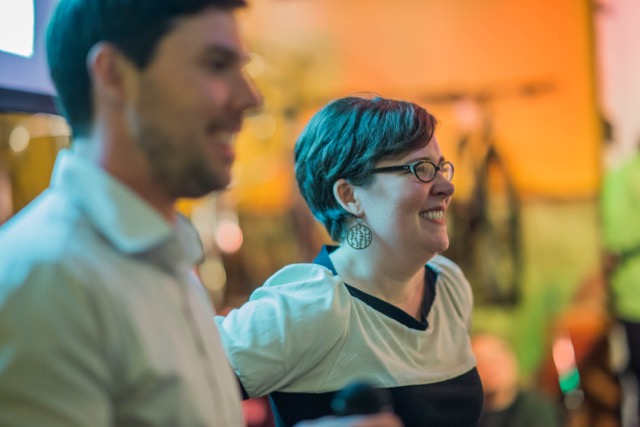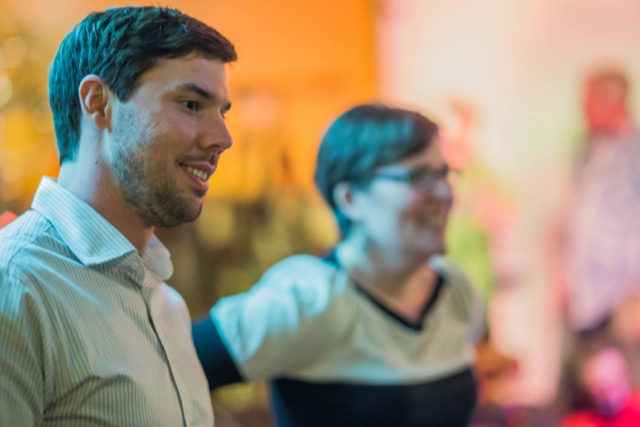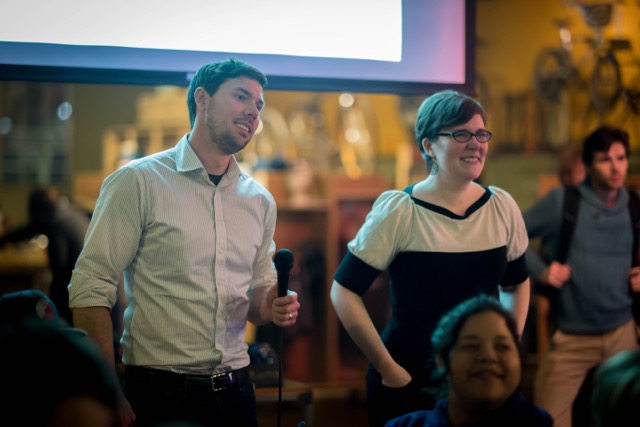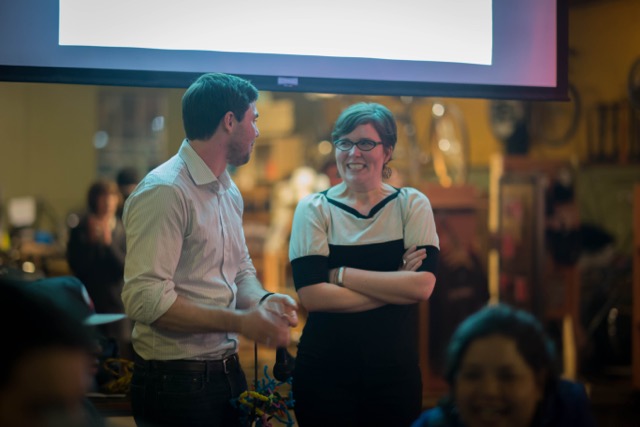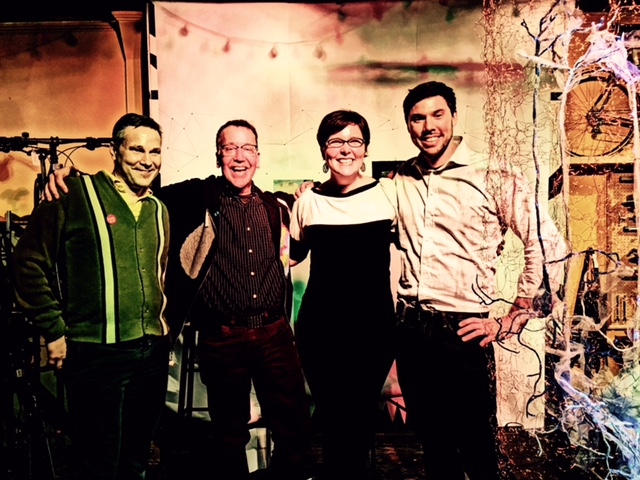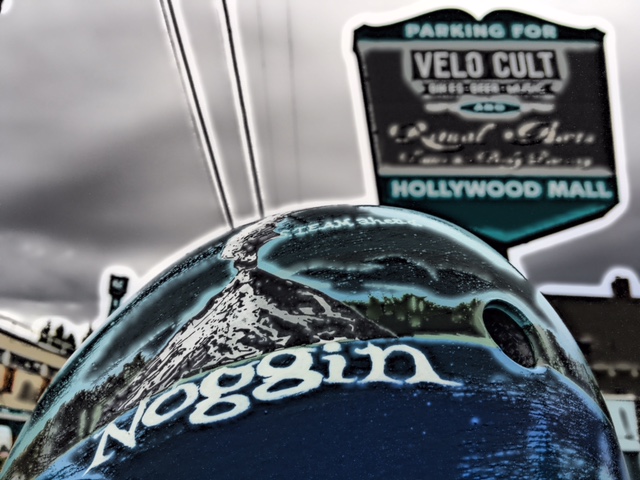Noggin packed the bike house Wednesday, for an informative, entertaining look at how brains encode memories, covering both genetic and “epi-genetic” contributions to why you remember what you remember, and do what you do…
Dr. John Harkness, a postdoc in Barbara Sorg’s former Neuroscience lab at WSU Vancouver, teamed up with celebrated Pacific Northwest artist Kindra Crick, to present “Remembering is who we become: How neurogenetics influence our preferences, memories and personalities…”
Video by Trevor Kubat
John is a recent graduate of the Behavioral Neuroscience department at OHSU, where he studied the genetic effects of chronic methamphetamine exposure with his mentor, Tamara Phillips. At WSU he worked with both Barbara Sorg and Megan Slaker to investigate the role of perineuronal nets in cocaine use disorder.
Kindra Crick is an extraordinary Portland artist who gives powerful visual expression to the process of scientific inquiry and discovery. In her stunning, layered mixed-media work, like this Brodmann-inspired encaustic below, she incorporates drawings, diagrams, maps and imagery from under the microscope…
Kindra has a degree in Molecular Biology from Princeton University and a Certificate in Painting from the Art Institute of Chicago. She is also influenced by the work and inspired marriage of her grandparents, the scientist Francis Crick and the artist Odile Crick…
We were thrilled to welcome Kindra, who has exhibited throughout the U.S. and abroad. Her seven-foot DNA-inspired sculpture was recently auctioned at Christie’s in London, alongside works by the Chinese artist Ai Wei Wei and the Iraqi-British architect Zaha Hadid. Together they raised over a half million dollars to fund the new Francis Crick Institute in London..!
By the time Kindra and John took the stage, Velo Cult was hopping, as quite a crowd enjoyed Kindra’s cut cable neurons, strikingly enmeshed in woven copper nets, and ordered some tasty northwest brews from the bar…
John started by introducing the “central dogma” of molecular biology: a tongue in cheek reference to how segments of our double stranded DNA, called genes, are transcribed into single strands of messenger RNA (mRNA). mRNA then exits the nucleus, and is translated into proteins, which are physical structures, little machines, nanotechnology that build our cells, including neurons – determining what they look like, and what they can do…
John also explained that while all cells have the same genes, not all genes are expressed to the same degree, which leads to dramatic structural and functional differences in cells that make up our bodies, and our brains. Odile Crick actually created the familiar, iconic image of the double helical form of DNA, which was published in the journal Nature in 1953…
But John described how the DNA itself is wound tightly in places around proteins called histones (the spheres in his slide, below). Various chemical tags can be attached to, or removed from histone proteins or portions of the DNA, depending on what happens to the cell, which can serve to enhance or inhibit gene expression. This is known as epigenetic regulation (the regulation of genetic expression from “above” the genes)…
And one thing that can happen to cells – including neurons, wired together in extensive networks, and supported in places by scaffolds of glycoproteins and other chemicals – is drug exposure, which changes the chemical tags on chromosomes, altering gene expression, and often extensively revising those networks, and thus our behavior as well…
So, as John noted, if you give a mouse some methamphetamine, there’s gonna be some change, in genes, brains, and behavior…
For example, John and Tamara found that chronic meth exposure causes epigenetic changes, “opening” DNA, which likely changes gene expression, altering connections amongst neurons, and leading to increased response to stimuli now associated with meth…
Mice (and people) repeatedly exposed to meth can exhibit what’s known as behavioral sensitization, particularly in terms of how much they move – they move more as their meth exposure, epigenetic modifications, and structural brain changes progress. These are memories, and ones that many (perhaps mice included) would like to forget…
John also discussed related research with Barb Sorg at WSU, whose lab investigates the role of those extracellular glycoprotein matrices, called perineuronal nets, in memory formation. The Sorg lab found that these chemical scaffolds surround and support neurons and synapses following exposure to cocaine, likely restraining plasticity and solidifying newly formed drug-related memories. By removing these nets, dependent mice appear to forget these associations, and no longer respond to cues associated with cocaine.
This finding could lead to novel approaches to help recovering addicts “unlearn” their addiction. John illustrated the loss of these nets, and potential restoration of plasticity, using audience members as neurons, and “whirly” singing tubes as synaptic connections..!
Kindra Crick then took the microphone, and movingly described how the relationship between her grandfather’s achievements in science and her grandmother’s achievements in painting and illustration inform her own work at the intersection of science and art…
For example, she explained how this striking image (below), titled “Mother First Year II” evolved as an attempt to understand how the powerful and changing feelings she experienced as a new parent also involved changes in her brain. Her painting depicts the developing child as initially overwhelming the brain, but then receding until it ends up resting more comfortably within central, emotional, limbic regions…
In 2015, Kindra, along with 20 additional artists, was asked by Cancer Research UK to address the question “what’s in your DNA” using a sculpture based on the double helix as a blank slate. These works were auctioned to help construct the new Francis Crick Institute in London, and her piece now resides in the MRC Laboratory of Molecular Biology in Cambridge, England, where Francis Crick pursued his Nobel Prize winning research in genetics…
Kindra then spoke about how she aimed to capture the connection between scientific and artistic inquiry, and how that related to her grandfather and grandmother’s relationship. The crowd was enraptured by this rich melding of perspectives, along with the compelling piece she’d created for tonight – neurons and synapses, along with ribbons and knitted copper wire illustrating, colorfully and dramatically, the nets that embrace, and constrain, our memories…
And then she added a little action (potential!) to her riveting cerebral art!
Kindra and John jointly led the audience in the creation of their own neural networks, hooking up individuals with climbing ropes and fixing them in place with carabiners. Those linked together read out a mad libs story based on words chosen by the people at each table…
Then their perineuronal nets were dissolved (well, they unhooked the carabiners!), which restored neuronal plasticity – allowing for new connections, and new stories to be told…
(Pics below by Trevor Kubat)
Kindra also related a tale about her grandfather, who was asked by a woman at a public forum to name the most exciting thing that we have discovered about the brain. “One thing we have now learnt,” Crick replied, “is that the brain is really plastic” – which she took a bit too literally, fainting on the spot!
An extraordinary, entertaining, and educational night of STEAM enjoyment and learning. Many thanks to Kindra, John, and of course the incomparable Velo Cult for hosting this event!
SLIDES: Velo Cult Talk for NW Noggin (John Harkness)



